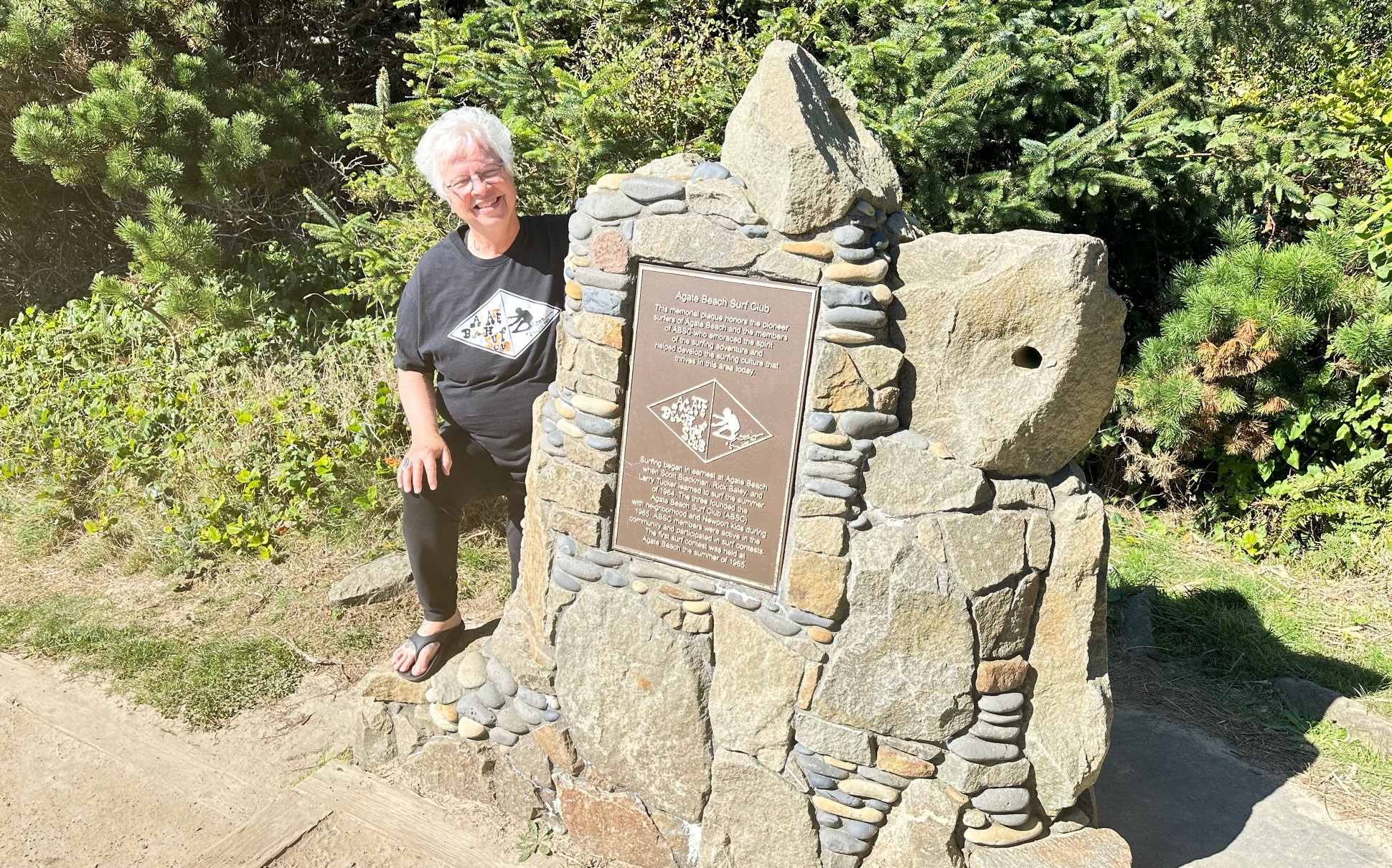
By KATHLEEN O’CONNOR/Lincoln Chronicle
Every day, Sandy Blackman tries to fit in the four things she needs to survive and thrive — meditation, swimming, writing, and creativity. Blackman is a writer, an artist, and the chief historian for the surfing community on the central Oregon coast.
 Meditation grounds her, especially since the death in 2018 of her husband, photographer and surfer Scott Blackman. Scott had been at the heart of Oregon surfing since 1964 when he started surfing in earnest at Agate Beach in Newport. He went on to form the Agate Beach Surf Club in 1965 and over the years took thousands of photos of surfers.
Meditation grounds her, especially since the death in 2018 of her husband, photographer and surfer Scott Blackman. Scott had been at the heart of Oregon surfing since 1964 when he started surfing in earnest at Agate Beach in Newport. He went on to form the Agate Beach Surf Club in 1965 and over the years took thousands of photos of surfers.
Swimming grounds Blackman, too — she has always preferred being in the water to being on land. She grew up in Newport, learning to swim in the Natatorium at Nye Beach and in Beaver Creek. Over time she has been on swim teams, worked as a lifeguard and taught swim lessons. She continues to swim five days a week, letting the water help her process her feelings.
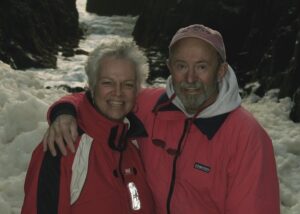
Writing to preserve history has been part of Blackman’s life for 40 years and what she has done full time since she retired in 2005 as a counselor at Toledo High School. She married Scott Blackman in 2002. When one of his original surfing buddies, Marty Skriver, passed away they decided to write about the history of surfing in Oregon, fearing that the stories would be lost over time. Together they wrote two books, Oregon Surfing Central Coast and Oregon Surfing North Coast. Since her husband’s death, Sandy Blackman has written two more, Cold Water Surfer: The Early Days and Agate Beach Surfers 1964-2024.
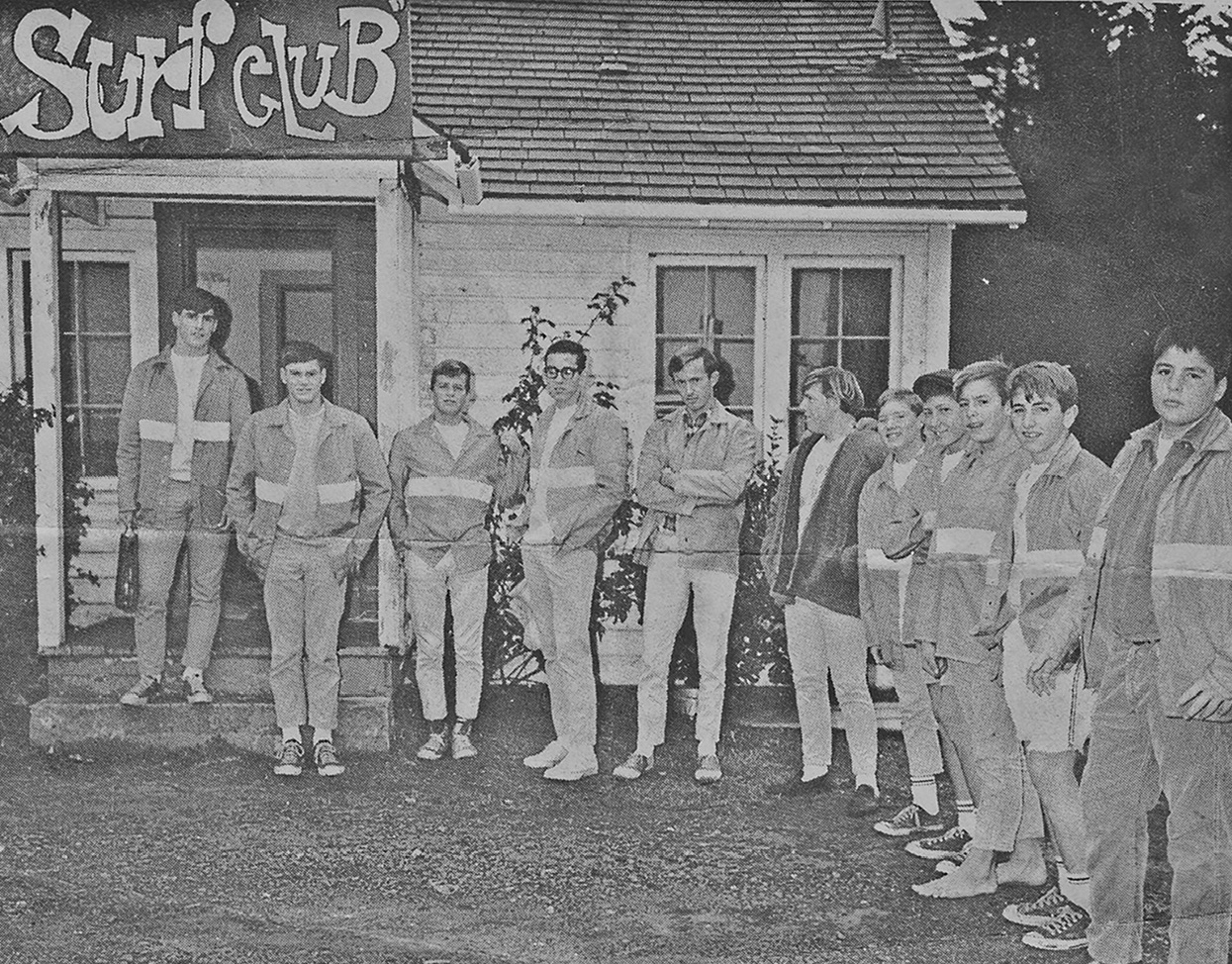
Question: How did the Agate Beach Surf Club begin?
Answer: There may have been an occasional surfer on the central Oregon coast before 1964, but there wasn’t anyone who had adopted surfing as a lifestyle/culture. Like everyone in the early ‘60s Scott was aware that surfing was popular in California, and he decided he could do it in Oregon just as well, even though the ocean is very cold here. At age 26 he bought a surfboard from the Sears catalog and decided that the Agate Beach Cove would be a safe place to learn. Rick Baley, a 17-year-old who lived just above Agate Beach, saw him catch a wave and immediately ran to the beach. Rick’s friend, Larry Tucker, also 17, soon joined them and together the three of them learned to surf that summer.
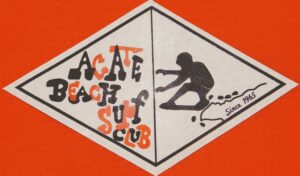
They surfed in their t-shirts and shorts, using heavy boards waxed with paraffin. Big driftwood bonfires helped them warm up before they faced the climb up the hill from the beach. In July 1965 they decided to form the Agate Beach Surf Club and sponsored a surf contest that same August, the second one to be held in Oregon. They sponsored several more contests over the next three years, went to contests put on by the Coos Bay and Seaside clubs and went on “surf safaris”, taking road trips to surf at beaches in California and Mexico.
The club grew to include 21 members by 1966. One of the members was Marion Bowers, whose parents loaned them a small house near the beach to use for meetings and for storing their boards. By 1969 the club disbanded as adulthood took the members in different directions, but most of them remained hooked on surfing.
The three Oregon surfing clubs had started something big. The Oregon surf now draws hundreds of surfers to the area each year, helping fuel the local economy.
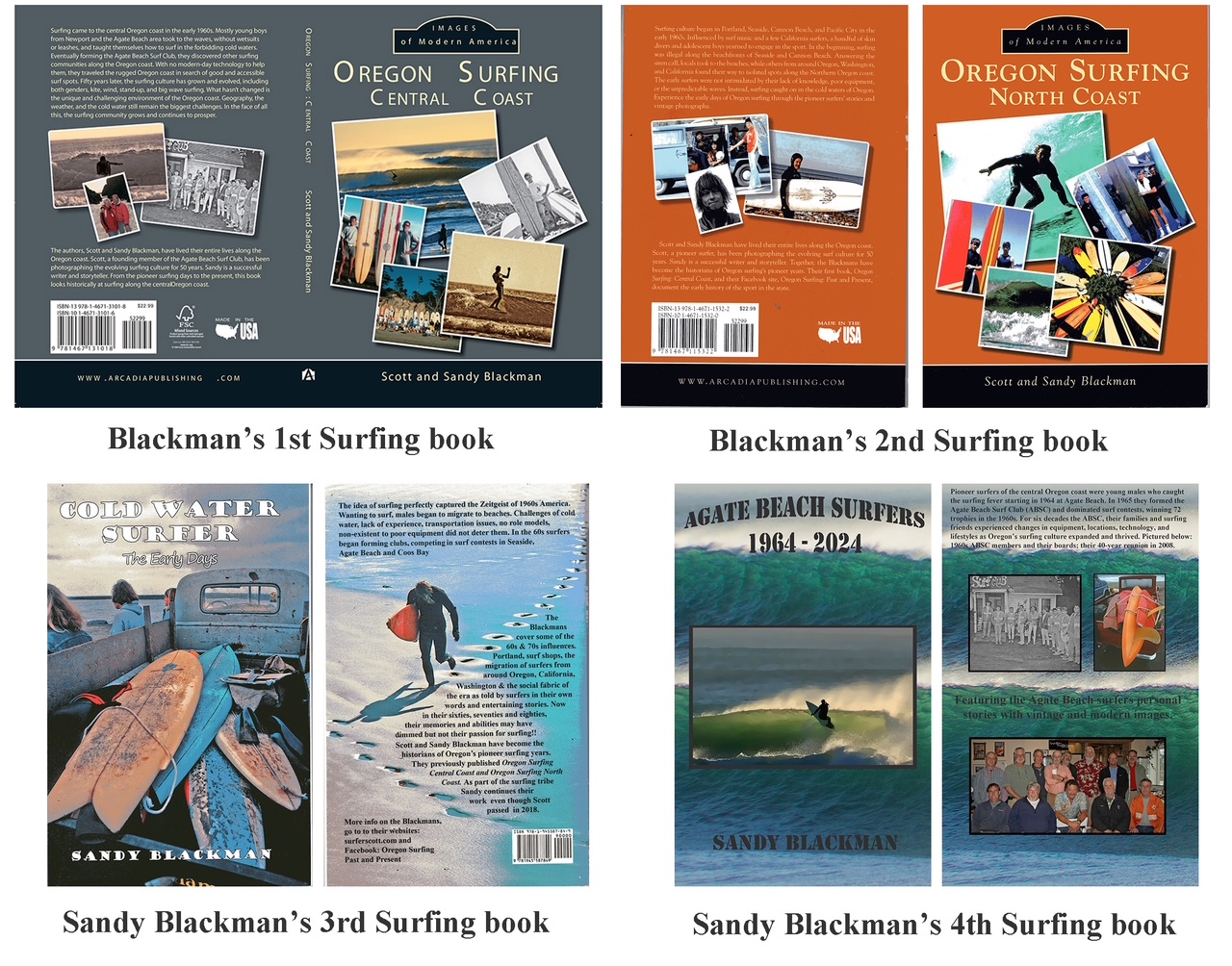
Q: What was it like to write about the history of surfing in Oregon?
A: I was a small part of the beginning of surfing at Agate Beach – I was one of the many high school students who skipped school occasionally to rush to the beach to watch the surfers. Scott Blackman’s name was whispered in hushed tones throughout the hallways. It was a remarkable gift to cross paths with him later in life, marry him and collaborate with him.
He had stopped surfing in the early ‘70s, deciding instead to participate by continuing to photograph as many surfers and surfing events as possible. He had thousands of slides, each one documented with the name of the surfer, the date, the place and the event. Our task was to go through them and choose the ones that told the story the best. It was daunting. We interviewed and videotaped about 100 people who had surfed in Oregon any time from 1964 on.
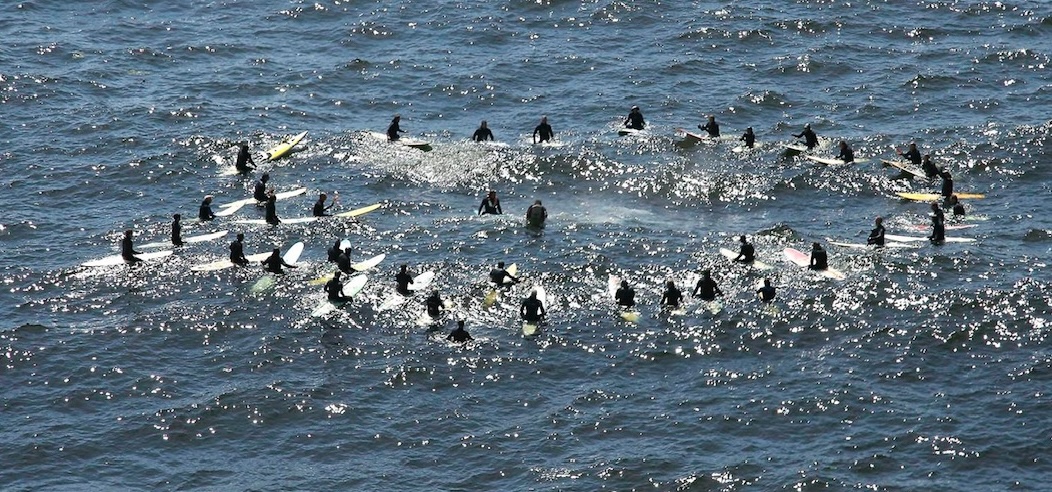
Q: Please tell us about the Oregon Paddle Out.
A: A Paddle Out is a traditional surfing ceremony to honor a surfer who has passed away. I was devastated when Scott died in 2018 and needed a way to move forward. With the help of Mike Cavanaugh, Newport’s Parks and Recreation director, I started the Oregon Paddle Out to honor all Oregon surfers who have passed on. Our first event was in 2022, and this year we paid homage to 87 surfers and celebrated the 60th anniversary of the Agate Beach Surf Club.
For me the first Paddle Out was a significant step for processing my grief, and many family members of the surfers we have honored note the same thing. The ceremony is very moving – 50 surfers paddle out and make a circle sitting on their boards. Then each solemnly recites multiple names. It’s such a wonderful way to acknowledge how much water and surfing meant to each of them.
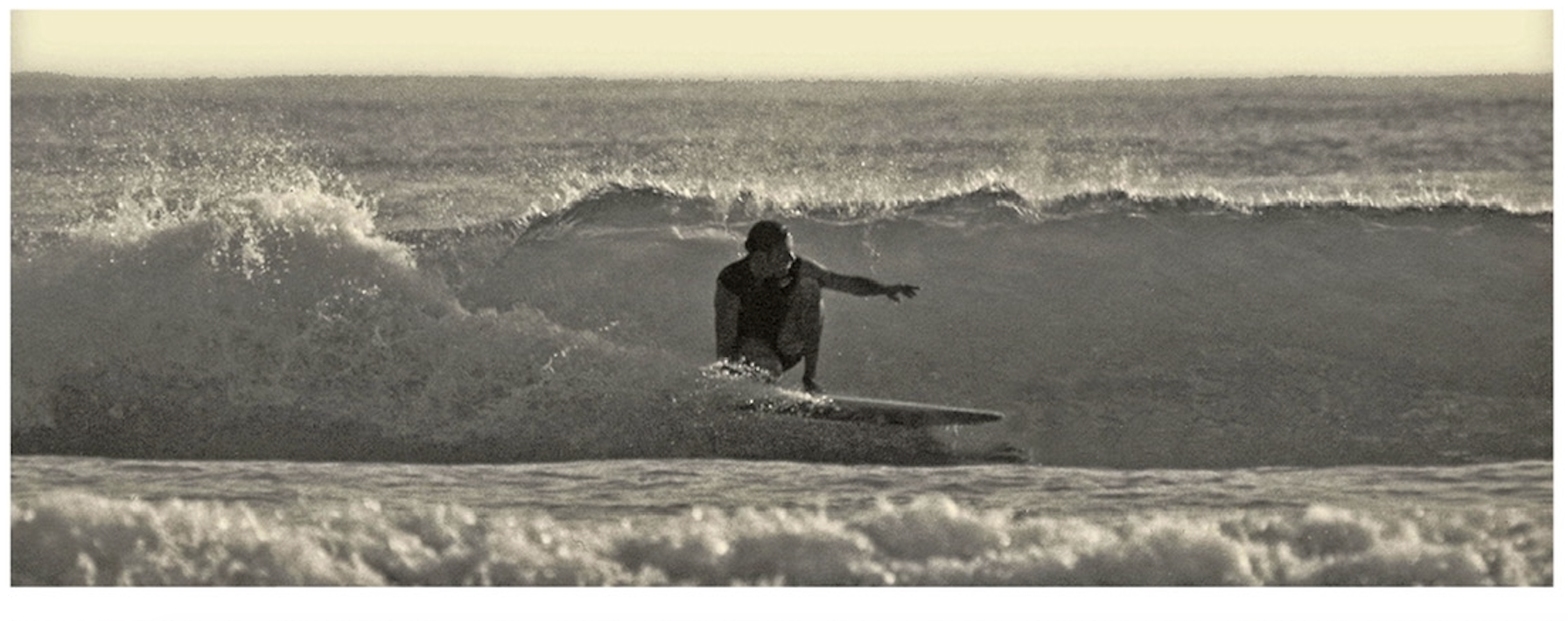
Q: What projects did you and Scott work on together besides the surfing books?
A: We had a photography exhibit of Scott’s coastal photographs at the Oregon Coast Aquarium from 2008-2010. It moved to the University of Oregon Law School for 10 months in 2011. In 2009 we provided photos to two Lincoln County School District teachers to use in creating a video called Surfing Agate: Exuberant Dance of Youth, which was presented at the Visual Arts Center in Newport. They gave away 75 DVDs and one of them somehow reached Arcadia Publishing, a company that publishes local/regional history books throughout the country. Amazingly, they wanted to publish our books once we had written them. Besides the surfing books we also wrote a history of the Oregon Country Fair.
Q: What was it like to grow up in Newport in the 1950s?
A: I lived in a South Beach neighborhood that was full of boys. It was easy to be a feral tomboy because the only rules my parents had for us were 1) be home in time for dinner, and 2) stay away from the water. But, on the other hand, my mother wanted me to be a dancer, so I was always enrolled in dance lessons. Also, music was important in our home – my mother played the organ and sang and always had big bands playing on the record player. I have been a drummer since junior high school, and that’s how I met Scott later in life – he had been drumming for decades, too.
Tell us a secret.
I have had two near death experiences in my life – one at age 14 and one at age 39. Strangely, that one occurred when I was taking a course in Death and Dying at Oregon State University. Together they taught me to live each day to the fullest with love, joy and curiosity, as if it was my last day.
- Website: SurferScott.com
- Email: oregonpaddleout@gmail.com




















